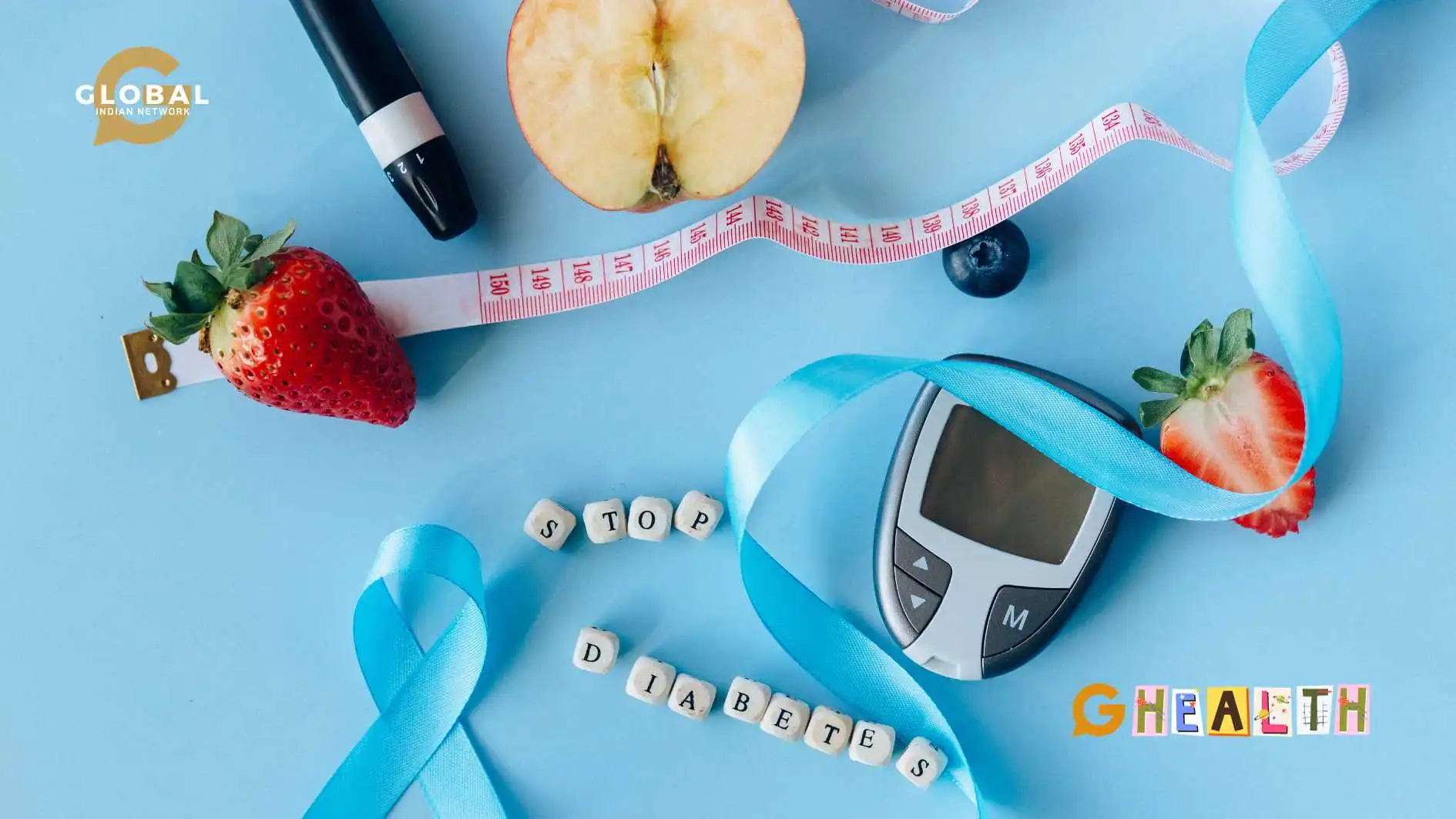The saying ‘Let food be thy medicine and medicine be thy food’ is attributed to Hippocrates, the ancient Greek physician. Throughout history, it has applied from the ancient cavemen to the modern spacemen. All humans need good food that provides nutrition.
Humans have always had to fight diseases of one form or another. Every era had its own set of diseases and medical practices. In the modern era, the internet has played a significant role in raising awareness about lifestyle diseases. Yet, we are grappling with some that have gained epic proportions in recent decades. One of them is diabetes.
What better time than now to deal with this disease? November 14th is World Diabetes Day, and it is always better than never to start tackling this health issue. Let us also find out some good food for diabetics.
Table of Contents
Diet affects diabetes management. People with diabetes must maintain a proper and nutritious diet for many reasons. Firstly, a diet directly affects blood sugar control, so eating the right foods in the right amount can help control blood glucose levels. Besides, a healthy diet can help with weight management, which is essential for managing diabetes because many people with type 2 diabetes are overweight or obese.
Additionally, people with diabetes can help prevent complications related to diabetes, such as heart disease, kidney problems, and nerve damage. Finally, proper nutrition ensures that individuals have enough energy for daily activities, thereby promoting an active lifestyle that is beneficial for diabetes management.
Why Should a Diabetic Follow a Diet?
This involves identifying foods that aid in stabilizing blood glucose levels, are low in unhealthy fats, and offer essential nutrients. As a bonus, the risk of heart disease and a rise in blood pressure are also managed.
The high blood sugar associated with diabetes can damage blood vessels, causing problems in organs such as the heart, eyes, nerves, and kidneys. It is important to manage blood glucose levels through a healthy, balanced diet, regular exercise, and medication to prevent complications.
Good Food for Diabetics
Every person needs to eat nutrient-rich food even before they become unhealthy or sick.
Here are some examples of foods for controlling diabetic conditions:
Fresh, Non-starchy Vegetables
Vegetables are crucial for diabetics due to their low calorie and carbohydrate content and high fibre, vitamin, and mineral content. Essential vegetables include carrots, broccoli, zucchini, cabbage, and spinach.
Non-starchy vegetables have a low carbohydrate and calorie content yet are packed with essential nutrients like vitamins, minerals, and fibre. The high fibre content in these vegetables helps regulate blood sugar levels, preventing sudden spikes. Moreover, their low-calorie nature supports weight management, crucial for diabetes control. Non-starchy vegetables also offer antioxidants that can protect against complications related to diabetes.
Leafy vegetables like spinach, kale, broccoli, cauliflower, Brussels sprouts, zucchini, bell peppers, cucumbers, and asparagus provide nutrients for a healthy body. For diabetics, fill half of your plate with these vegetables. Cook non-starchy vegetables with minimal oil, and use herbs and spices.
Fresh Fruit
Pieces of fruit are essential for individuals with diabetes due to their vitamins, minerals, antioxidants, and dietary fibre. They help regulate blood sugar levels and support the immune system. Berries like strawberries, blueberries, and raspberries are low in sugar and high in fibre. Apples and citrus fruits are also beneficial. Consuming whole fruits, which are low in sugar and calories, is recommended. Avoid fruit juices and dried fruits.
Food Choices to be included
Whole grains such as oats, quinoa, and brown rice; lean proteins like poultry and tofu; and legumes like lentils, chickpeas, and beans can control blood sugar. A healthy diet for people with diabetes should include high-protein, low-sugar options like avocados and fatty fish.
Virgin olive oil
Olive oil is a healthy addition to a diabetes diet due to its low glycemic value and high antioxidant content. It helps reduce oxidative damage and maintains stable blood sugar levels. Adding extra-virgin olive oil to high-glycemic meals reduces the body’s glycemic response and promotes long-term blood sugar control. (Source:diabetes.co.uk)
Omega-3 fatty acids
Omega-3 fatty acids may benefit people with diabetes by reducing insulin resistance, improving blood glucose levels, and supporting heart health. Food sources of omega-3 fatty acids include fatty fish, flaxseeds, chia seeds, and walnuts.
Lean meat
Lean meats, such as specific cuts of meat like beef, pork, and chicken, can be suitable options for people with diabetes. Examples include specific cuts of beef, lean pork, veal (except for veal cutlets), poultry (skinless chicken), and wild game (without skin).
Kidney Beans and Black Beans
Kidney beans and black beans are nutritious foods suitable for diabetics due to their low glycemic index and high protein, fibre, and potassium content. However, they require careful carbohydrate management due to their high carbohydrate content. Both beans help regulate blood sugar and improve gut bacteria but require careful carbohydrate management.
Other Beneficial Foods
Other beneficial foods for diabetes management include nuts, oatmeal, dairy, and cinnamon. Eating these foods can help prevent the risk of heart disease.
Food Choices to be Avoided
A healthy eating plan for people with diabetes or someone with the risk of getting it should avoid the following food choices.
White rice and white bread
White rice, a high-glycemic food, can cause rapid blood sugar increases, affecting glucose control. Whole-grain rice, rich in fibre and nutrients, is better for diabetes patients. Carbohydrates, which provide energy, can cause rapid blood sugar spikes. Carbohydrate intake depends on age, weight, and activity level. Counting carbs is crucial for managing blood glucose levels.
Whole-grain bread is preferable to white bread for its higher fibre and nutrient content.
Energy drinks
Energy drinks, high in sugar and caffeine, can cause rapid blood sugar increases and interfere with glucose control, making them generally not recommended for diabetics.
Trans fats
Trans fats, or unsaturated fats, come in natural and artificial forms. Natural trans fats are safe in moderation, while artificial trans fats pose health risks due to the chemical modification of vegetable oils.
Healthy Choices
Here are some healthy food choices.
Sweet potatoes
Sweet potatoes are a nutritious, low-glycemic food suitable for diabetes patients due to their fibre, vitamins, and potassium content. However, controlling blood sugar levels requires careful consideration of quantity, type, preparation, seasonings, and side dishes. (Source: mayoclinic.org)
Saturated Fats
Reduce intake of saturated fats in full-fat dairy, butter, cream, processed and fatty meats, fried foods, cakes, pastries, and foods with palm and coconut oil.
Milk and dairy products
Milk and cheese are beneficial for diabetes patients due to their calcium content. However, it’s crucial to consume low-fat or fat-free milk to avoid excess calories and saturated fat. Cheese, a dairy food with low carbohydrates and high protein, can help reduce blood sugar. Unsaturated fats from vegetable oils, nuts, seeds, avocados, and fish are better choices.
Snacking wisely
People with type 2 diabetes should practice healthy snacking, which prevents overeating, provides energy, and aids weight control. Choose healthy fats, fibre, protein, and low-sugar options like almonds, walnuts, chia seeds, carrot sticks, cucumbers, and blueberries. Keep servings small; aim for 15 grams of carbohydrates per snack, and space them evenly between meals.
Create Awareness
Food labels provide essential information about ingredients, nutritional content, allergens, and weight, but some lack carbohydrates due to a lack of defined criteria. Being forewarned is being forewarned. Therefore, be aware of what you and your loved ones will consume.
Conclusion
Diet plays a central role in diabetes management by controlling carbohydrate intake, portion sizes, and promoting weight control. Skipping meals should be avoided, and walking after meals may be beneficial. Regular physical activity is vital for achieving and maintaining a healthy weight, increasing insulin sensitivity, and using blood sugar as an energy source.
Structured lifestyle interventions of 150 minutes of physical activity per week and dietary changes can prevent or delay the onset of type 2 diabetes. Physical activity also helps regulate blood sugar spikes and reduces the risk of heart disease and nerve damage. This, along with a healthy diet (good food for diabetics) and weight loss, will reduce the risk of diabetes complications.
FAQs
Is white rice a refined grain?
White rice, a refined grain with a higher glycemic index, is a health risk for those with diabetes as it removes fibre, vitamins, and minerals, while whole grains like brown rice, quinoa, and barley provide more nutrients.
What are the sources of protein for a diabetic patient?
The sources of protein in a diabetic diet, which include fish, legumes, nuts, tofu, and lean meats, provide protein, healthy fats, fibre, and a low glycemic index. Choose fish low in mercury and omega-3s; opt for fresh lean meat; and incorporate plant-based proteins like legumes and tofu. Beans, low in saturated fat and high in fibre, are a great alternative to meat.
What are the health benefits of exercising for individuals with diabetes?
Physical activity boosts insulin sensitivity and reduces resistance in diabetes patients, lowering blood sugar levels through glucose use. The effect varies depending on exercise intensity, so check blood sugar before and after exercise and consult a doctor. (Source:diabetes.org)









